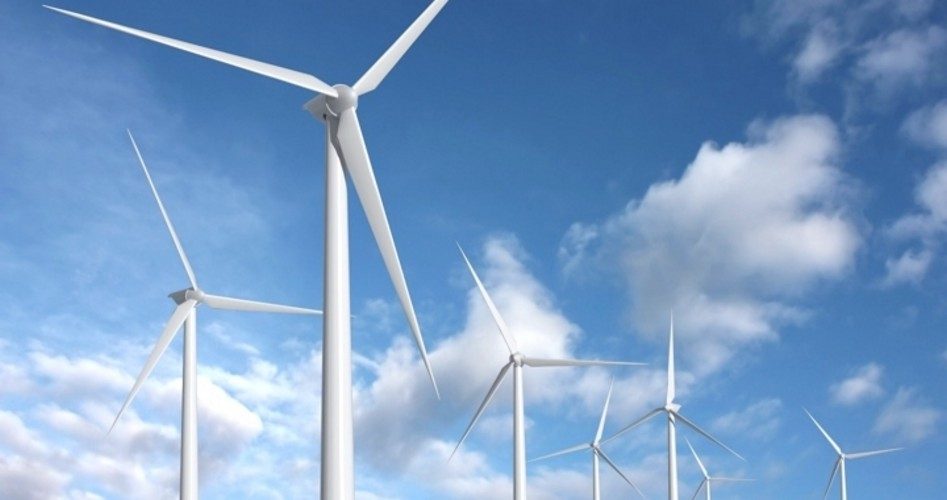
Despite being hailed as a leader in “green” innovation, wind farms might cause a warming effect on local climates, concluded a new study released Sunday. The newfound revelation casts a shadow over the alleged accomplishments of wind power, and will likely ignite controversy among lawmakers and advocacy groups.
Globally, wind farms last year had a 21-percent increase (over 2010) in their capacity to produce electricity, and this capacity is expected to rise further as more, and larger, farms are constructed, according to the Global Wind Energy Council. China is reportedly building 36 wind turbines every day, while Texas holds the rein as the number-one producer of wind power in the United States.
Researchers at the State University of New York at Albany observed satellite data circling areas around wind farms in Texas, where four of the largest farms in the world are stationed. The researchers’ data, published in the Nature Climate Change journal, uncovered a warming trend of up to 0.72 degrees Celsius per decade — using data from 2003 to 2011 — in regions over the wind farms, compared with nearby areas without farms.
In contrast, scientists report that the Earth’s average temperature has increased by only 0.8 degrees Celsius since 1900.
“We attribute this warming primarily to wind farms,” reported the study’s authors, which is likely due to the impact of the energy discharged by farms, as well as the turbulence ignited by turbine rotors. “These changes, if spatially large enough, may have noticeable impacts on local to regional weather and climate.”
Many experts say wind power complements the generation of solar power, because solar power is only generated during daytime hours, while nighttime hours often experience stronger winds. However, the study’s authors and their colleagues deduced that turbulence behind the farm’s turbine blades force cooler air to the ground at night, and mix in warm air higher in the atmosphere, resulting in an elevated overall temperature.
“Given the present installed capacity and the projected growth in installation of wind farms across the world, I feel that wind farms, if spatially large enough, might have noticeable impacts on local to regional meteorology,” Liming Zhou, one of the study’s authors, wrote in an email to Discovery News. “The year-to-year land surface temperature over wind farms shows a persistent upward trend from 2003 to 2011, consistent with the increasing number of operational wind turbines with time.”
Fox News reported on the possible climate effects of such “local” warming:
FAA data shows that the number of wind turbines over the study region has risen from 111 in 2003 to 2358 in 2011, according to the study. The warming could hurt local farmers, who have already suffered through a killer drought over the past few years. Texas agriculture contributes $80 billion to the state’s economy, second only to petrochemicals, according to the Texas Department of Agriculture.
West Texas is a dry area that uses irrigation to grow wheat, cotton and other crops, as well as raise cattle. But increased warming can play havoc with plant growth, as well as change local rainfall patterns.
The warming trends could produce long-term effects on wildlife, the research indicated, as well as affecting regional climate patterns, as warmer areas impact cloud formations and even wind speeds. Some scientists have advised that large wind farms, which can comprise hundreds of thousands of turbines, would not only change weather patterns but could be utilized to control them.
To be fair, the study’s authors acknowledged that more research is needed, in different regions and for broader periods, before more definitive conclusions could be drawn. “Given the present installed (wind farm) capacity and the projected installation across the world, this study draws attention to an important issue that requires further investigation,” the authors surmised. “We need to better understand the system with observations and better describe and model the complex processes involved to predict how wind farms may affect future weather and climate.”
Greenhouse gases generated by fossil-fuel burning are alleged contributors to global warming, which scientists say are leading to ocean acidification, rises in the sea level, and the melting of glaciers. Consequently, lawmakers and environmentalist groups are pushing for cleaner energy sources, with wind power as one of the leading agents.
But John Dabiri, director of the Center for Bioinspired Wind Energy at the California Institute of Technology, warns that jumping to conclusions as to what are the best energy “solutions” — particularly when such action involves government interference — may be imprudent. Zhou and his colleagues’ findings show “that we need to think carefully about the unintended environmental consequences of any large-scale energy development,” Dabiri averred, “including green technologies.”
The purported research, if validated by future studies, should help reveal the fatuity of doling out massive taxpayer-backed subsidies to so-called green energy “solutions.” In an effort to abate climate change, the advocacy of wind energy is possibly adding to climate change (even if the impact is “localized” and minimal). Furthermore, hundreds of thousands of birds die every year from turbine blades.
Are these not the sort of effects such massive public investments are striving to prevent?



